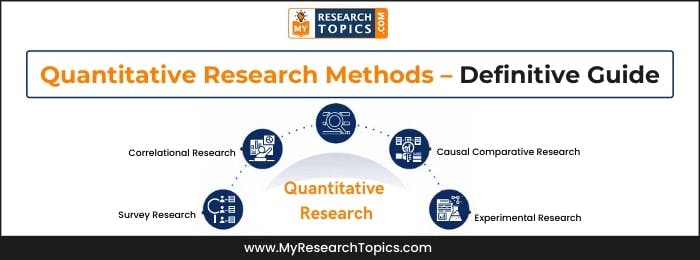Types of Reliability & its Use in Research Methodology with Examples
Published 16 October, 2023

Reliability is a term that can be applied to many aspects of life. It is the degree to which something can be relied upon for accuracy, or its consistency. Reliability is an important concept in the field of research. It can be defined as how consistent or stable a measure is when it’s repeated over time. There are many types of reliability, and this post will explore what they are and their uses in research.
Introduction of Reliability
Reliability refers to the ability of an experiment or conclusion to be replicated when the study is repeated. Reliability is basically an extent up to which the various techniques that the researcher applies at the time of research produce similar outcomes.
It is very crucial to ensure reliability while selecting the research design, accumulating, and analyzing information. Reliability is all about consistency in the research methodology. The two main factors are the types of research that researchers perform and the type of research methodology which students select helps in determining the form of reliability to be measured.
A reliable method of measurement is one that provides similar results if you use it again and again. For example, when taking a person’s temperature with the same thermometer under identical conditions, an unreliable thermometer would produce different readings every time.
Types of Reliability in Research
There are four main types of reliability that can be estimated by comparing different sets of results produced by the same method. These are:
Test-Retest reliability
The test-retest reliability allows for the consistency of results when you repeat a test on your sample at different points in time. This is best used with something that can be expected to stay constant, such as intelligence or personality traits.
You can utilize it for measuring the stability in outcomes in the case when you perform a similar test on the same sample but at different times.
For example, while preparing a questionnaire for measuring the IQ level of students. The teacher conducts the two tests but at different times on the same group of students. But there is great variation in the outcome of the test. Therefore the test-retest of the Questionnaire which you have a design for judging the IQ level of the student is less reliable
How to measure it
You can measure test-retest reliability by conducting a precise test on the same group of individuals at two different times and calculating the correlation between the two sets of findings.
Read Also: Reliability vs. Validity in Research
Inter-rater reliability
It is also known as interobserver reliability. Inter-rater reliability is the degree to which two or more raters agree on the assessment of an individual’s behavior. It is a measure of the quality of observational data and is important in research, especially before drawing conclusions about whether a particular thing caused some effect on an outcome. Researchers mainly utilize it for measuring the extent up to which there is mutual consent between people serving similar things.
For example, the research team in a hospital analysis wound healing inpatient. Researchers use a rating scale for measuring the different phases of the healing wound. In addition to this, the research team has also established a specific standard or criterion for analyzing the different aspects of wounds. After completion of the assessment of the wound by all members of the research team, compare results. The research findings of the comparison indicate the correlation among different sets of outcomes which means the test which you have to perform has high inter-rater reliability.
How to measure it
To measure the inter-rater type of reliability, different scholars conduct the same measurement or observation on similar data samples. Then they proceed to calculate how much their conclusions and results correlate with one another’s for a single set of examples in order to determine its accuracy as well as consistency between sets.
Parallel forms reliability
Parallel forms assists in correlational research between two equal versions of the test. Researcher mainly uses it when they have various assessment tools for measuring the same thing. Parallel forms reliability is a measure of the consistency and accuracy in different versions of an assessment tool.
For example, The researcher has designed a Questionnaire for measuring financial risk faced by the organization, all the questions in the questionnaire are categorized into two segments, and participants are also categorized. The teams have been asked to perform tests then the comparison between two different tests performed by both teams A and B has been done and findings reveal the same results which indicate a high parallel form of reliability.
How to measure it
The most common way to measure parallel forms reliability is by producing a large set of questions that are highly correlated, then dividing these randomly into two question sets. The same group of respondents answers both sets and you calculate the correlation between them. If they correlate well with each other this indicates high parallel form reliability
Internal consistency reliability
Internal consistency is a way to measure the correlation between multiple items in a test that are intended to measure the same construct. Internal consistency can be calculated without repeating or involving other researchers in order to produce an accurate assessment of how consistent your items are with each other on that same scale.
In other words, It helps in the assessment of the correlation between the numbers of items in a test. There are no requirements for making repetition in a test for measuring internal consistency. It is always advisable to have a single data set as it will provide you ease in measuring the reliability.
For example, the researcher designs a set of statements for analyzing both the pessimistic and optimistic mindsets of a group of people. The researcher asks all the participants to rate their agreement about the statement on the rating scale consisting of rating one to five. If in case the test is highly internal consistent then in such case respondents having an optimistic mindset will have high ratings and optimistic would have a low rating.
How to measure it
Following are the two common methods to measure internal consistency reliability:
- Average inter-item correlation: Determine the correlation between the results of all possible pairings of items and then calculate the average for a set of measures designed to assess the same construct.
- Split-half reliability: You randomly splits a set of measurements into two groups at random. You determine the correlation between the two sets of responses once you’ve tested the whole set on the respondents.
Other Related Guides
- Research Project Questions
- Types of Validity in Research – Explained With Examples
- Schizophrenia Sample Research Paper
- Quantitative Research Methods – Definitive Guide
- Research Paper On Homelessness For College Students
- How to Study for Biology Final Examination
- Textual Analysis in Research / Methods of Analyzing Text
- A Guide to Start Research Process – Introduction, Procedure and Tips
- Research Findings – Objectives , Importance and Techniques
- Topic Sentences in Research Paper – Meaning, Parts, Importance, Procedure and Techniques












